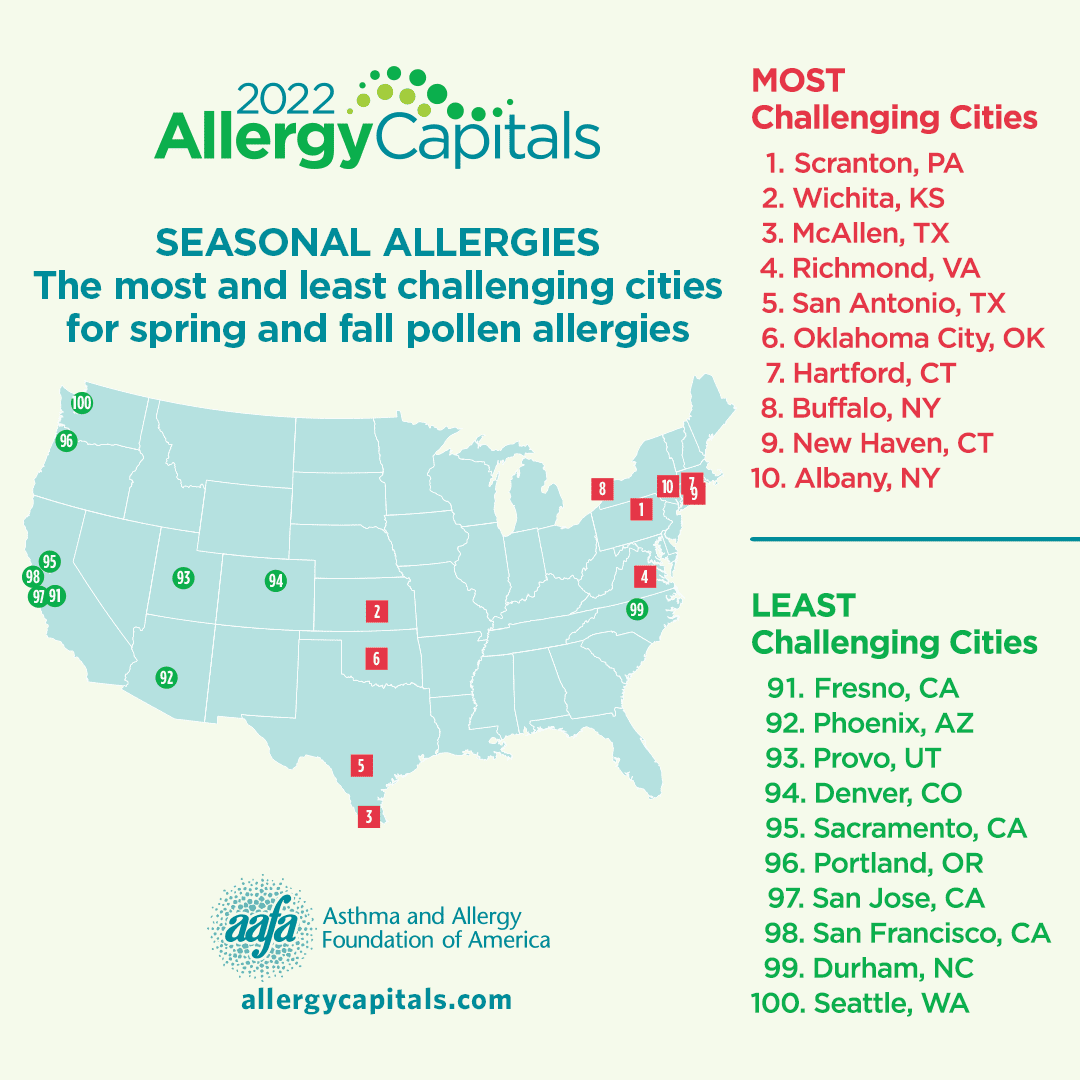Many children with food allergies have other allergic diseases – like asthma, eczema, and nasal allergies (allergic rhinitis). If your child sniffles and sneezes more with the changing seasons, pollen allergies could be the cause. Allergic sensitivity to airborne pollen from trees, grasses, or weeds can cause allergy symptoms.
The reason many children have related allergic conditions is because of the "allergic march" or “atopic march.” It often starts with dry skin, which may lead to eczema, food allergies, and then asthma.

About 7.2% of children have seasonal allergic rhinitis.1 And most kids with asthma have allergic asthma. This type of asthma is triggered by allergens such as pollen, mold, dust mites, and cockroaches. Because of the connection of allergic diseases, parents of children with food allergies need to know about managing seasonal allergies.
The Asthma and Allergy Foundation of America (AAFA) has released its 2022 Allergy Capitals™ report. This report ranks the top 100 most challenging cities in the continental United States to live with seasonal pollen allergies.
The report includes both spring and fall data to create a ranking of the top 100 cities based on:
- Spring and fall pollen scores
- Over-the-counter medicine use
- Availability of board-certified allergists/immunologists
This year, Scranton, Pennsylvania, is our top Allergy Capital. The full report includes seasonal rankings of the top cities for both spring and fall allergies. The report also includes tips on how to reduce your or your child's exposure to pollen.
The top 10 most challenging cities overall to live in with seasonal allergies in 2022 are:
- Scranton, Pennsylvania
- Wichita, Kansas
- McAllen, Texas
- Richmond, Virginia
- San Antonio, Texas
- Oklahoma City, Oklahoma
- Hartford, Connecticut
- Buffalo, New York
- New Haven, Connecticut
- Albany, New York
“Schedule an appointment with your allergist to work on a treatment plan together after reviewing your symptoms and considering allergy testing,” says Dr. John James, medical specialist and spokesperson for AAFA. “These measures will help identify specific therapies to help reduce allergy symptoms and to improve your quality of life. There are many options available, including environmental controls and medical treatments, to treat pollen allergies.”
Does your child have seasonal allergy symptoms? Talk with their allergist about testing and a treatment plan. Treating seasonal allergies can help improve quality of life for your child.
To see where your city ranks and for ways to manage spring and fall pollen allergies, visit allergycapitals.com.
References
1. Centers for Disease Control and Prevention. (2019). 2018 National Health Interview Survey data. U.S. Department of Health and Human Services. Retrieved from https://www.cdc.gov/nchs/fastats/allergies.htm
Kids With Food Allergies (KFA) is the food allergy division of AAFA.
Visit allergycapitals.com to see the full list and to learn more about allergy diagnosis, prevention and treatment.
Join our online community where you can get support for asthma and allergies and stay up to date on news and research.


Comments (0)